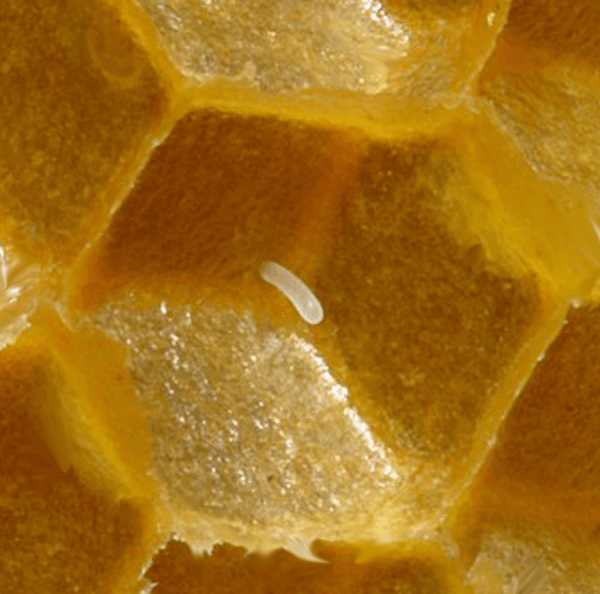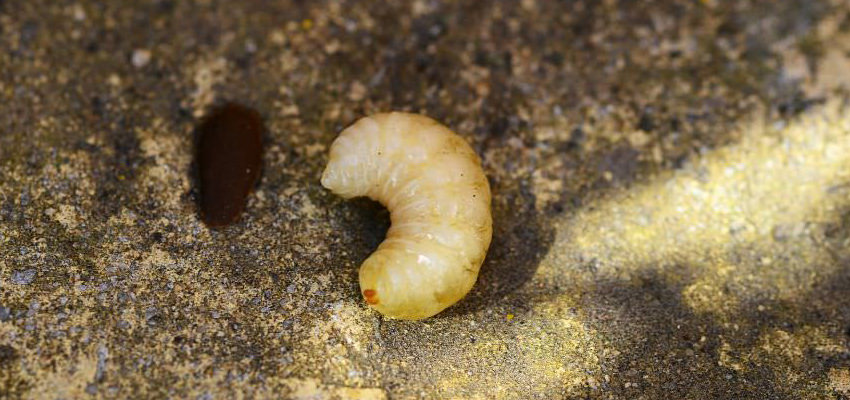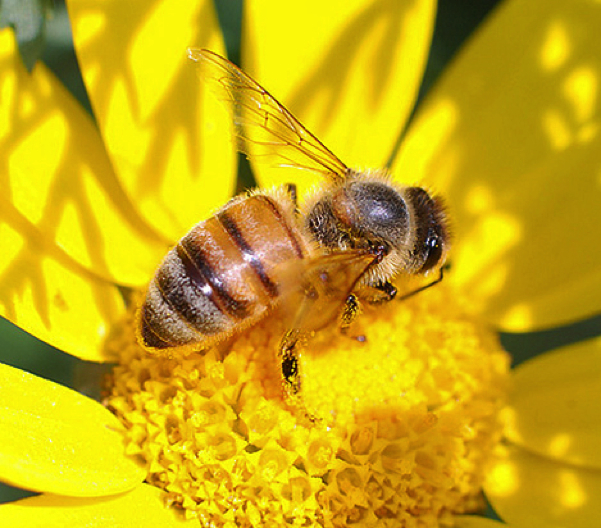Life Cycle of Honey Bee
Subject: Science

Overview
Bees go through four phases in their life cycle: egg, larva, pupa, and adult. The queen bee leaves the hive and establishes a new colony with worker bees. After mating, drones provide sperm to queen bees, who create millions of eggs. Honey bees lay whitish, elongated eggs, which hatch into larvae. The larval stage lasts 5.5 days, 6 days, and 7 days, with larvae feeding on royal jelly and beebread. The pupa stage lasts eight days, twelve days, and fourteen days, respectively. The adult pupa emerges, and worker bees play crucial roles in the hive. Honey bees are useful for various purposes, including social behavior, nutrition, agriculture, cosmetics, and profit. Beeswax is used in candles, cream, lipstick, and other products. Bee farming can boost a nation's economy by providing farmers with significant profits.
Every bee goes through four phases in its life cycle: the egg, larva, pupa, and adult. The length of these phases differs depending on the kind of bee. Two processes take place in the larva and pupa to finish the life cycle: histogenesis, or the creation of new tissues, and histolysis, or the deterioration of old structures. These transformations occur when an egg becomes a larva, a larva becomes a pupa, and a pupa becomes an adult. We refer to this process as a total transformation.
The queen bee eventually departs the hive and establishes a new colony with a large number of worker bees when there are too many worker bees in the hive. Bee workers build a new hive. In order to prepare a new queen, the worker bees in the old hive feed only royal jelly to a larva that was formed from a fertilized egg. Upon reaching adulthood, the queen bee departs for her mating or nuptial flight. The queen bee often takes off in the twilight on her mating flight.Following the queen bee as she departs the hive are some drones. Numerous drones mate with the queen bee. Drones mate and then perish. Drones provide sperm to queen bees, who utilize it to create millions of eggs. Spermathecae are the structures found within the queen's body that are utilized to store sperm. Because their genital organs are pulled during mating, drones die after mating. In the brood cell, the queen bee begins laying eggs two to three days after mating.

Egg
Honey bees lay whitish and elongated eggs.  On the first day, each egg is upright within the brood cell; on the second day, it is tilted; and on the third day, it is horizontal.To create drones, queen cells to create queens, and worker cells to create workers, the queen bee deposits her eggs in drone cells. In ideal circumstances, she may lay up to 3,000 eggs every day. The kind of bee determines how many eggs they lay. All bees lay eggs that last for three days. An egg can be anywhere in size between 1 and 1.5 mm. Fertilized and unfertilized eggs are the two different varieties. Bee workers and queens are produced from fertilized eggs. Eggs that are not fertilized become drones.
On the first day, each egg is upright within the brood cell; on the second day, it is tilted; and on the third day, it is horizontal.To create drones, queen cells to create queens, and worker cells to create workers, the queen bee deposits her eggs in drone cells. In ideal circumstances, she may lay up to 3,000 eggs every day. The kind of bee determines how many eggs they lay. All bees lay eggs that last for three days. An egg can be anywhere in size between 1 and 1.5 mm. Fertilized and unfertilized eggs are the two different varieties. Bee workers and queens are produced from fertilized eggs. Eggs that are not fertilized become drones.
Larva
After three days, the eggs lay eggs that hatch into larvae.  For queens, workers, and drones, the larval stage lasts approximately 5.5 days, 6 days, and 7 days. At this point, the larva feeds very forcefully. The larvae of future workers are smaller than drones and queens. The queen and worker bees are the female bees that emerge from fertilized eggs. The type of food that larvae are fed will determine whether or not they become worker or queen bees. All larvae are fed royal jelly for three days. After that, the type of food is changed according to the bee varieties. The nutrient-rich royal jelly is the constant food source for the larvae of future queen bees; however, after three days, the larvae of future workers and drones graze on beebread. A honey and pollen combination is referred to as "bee bread" or "honey bread." There are five moults in the larva. The kind of food that larvae are fed affects how long their developmental stage lasts.
For queens, workers, and drones, the larval stage lasts approximately 5.5 days, 6 days, and 7 days. At this point, the larva feeds very forcefully. The larvae of future workers are smaller than drones and queens. The queen and worker bees are the female bees that emerge from fertilized eggs. The type of food that larvae are fed will determine whether or not they become worker or queen bees. All larvae are fed royal jelly for three days. After that, the type of food is changed according to the bee varieties. The nutrient-rich royal jelly is the constant food source for the larvae of future queen bees; however, after three days, the larvae of future workers and drones graze on beebread. A honey and pollen combination is referred to as "bee bread" or "honey bread." There are five moults in the larva. The kind of food that larvae are fed affects how long their developmental stage lasts.
Pupa
 The bee undergoes structural changes throughout the dormant pupa stage of its life cycle, during which it neither feeds nor moves. Three sets of legs, wings, and mouthparts grow during this phase. For the queen, worker, and drone, the pupal stage lasts for eight days, twelve days, and fourteen days, respectively.
The bee undergoes structural changes throughout the dormant pupa stage of its life cycle, during which it neither feeds nor moves. Three sets of legs, wings, and mouthparts grow during this phase. For the queen, worker, and drone, the pupal stage lasts for eight days, twelve days, and fourteen days, respectively.
Adult
 After a number of changes, the pupa becomes an adult. The freshly formed adult bee's mandibles gnaw through the wax covering that is sealed around the brood cell before emerging. Worker bees instantly begin to assist others after emerging. They have crucial responsibilities in the hive, including feeding the larvae, tending to the brood cells, and keeping the hive safe.
After a number of changes, the pupa becomes an adult. The freshly formed adult bee's mandibles gnaw through the wax covering that is sealed around the brood cell before emerging. Worker bees instantly begin to assist others after emerging. They have crucial responsibilities in the hive, including feeding the larvae, tending to the brood cells, and keeping the hive safe.
Generally, it takes different time periods to reach adulthood from an egg. This is given in the following table.
| S.N | Type | Age | Function |
| 1. | Drone Bee | Throughout the life | Heat the hive and fertilize the queen bee. |
| 2. | Queen Bee | Throughout the life | Produces eggs and secretes pheromones to control hive activity. |
| 3. | Worker Bee | 1-3 day | To keep the pupa and egg larvae warm, clean the beehive and cling to the honeycomb. |
| 4-6 days | Give the larvae honeybread to eat. | ||
| 7-11 days | Their head develops a royal gland that produces royal jelly, which the larvae and queen eat. | ||
| 12-17 days | Their bodies have four pairs of developing wax glands that are utilized to make honeycombs, which are used to seal both honey and larval cells. | ||
| 18-20 days | Bee sting glands are designed to defend the colony. | ||
| After 21 days | Gather water, pollen, nectar, etc. |
Use of Honey Bee
Bees that produce honey are useful insects for all living things, including humans. The following points can be used to list their advantages:
- The division of labor, high degree of discipline, and diligent nature of honey bees foster a variety of social behaviors in humans.
- Bees generate very nutritious honey, which is utilized in Ayurvedic medicine, confections, bread, cakes, and other foods.
- Pollination occurs in plants when they take in nectar from blossoms. Thus, honey bees contribute to agriculture's ability to produce more crops.
- Beeswax is frequently utilized in cosmetics; it's used to make candles, cream, lipstick, and other items.
- If beekeepers learn how to harvest royal jelly from their hives, they may make a substantial profit.
- Bee farming is a lucrative endeavor that may boost a nation's economy by providing farmers with large profits.
Honey Production
Honey is not made by a specific gland in the bee's body, unlike royal jelly. A variety of various flower juices or nectars are allowed to evaporate as much water as possible with the aid of natural wind and the wind created when worker bees flap their wings to create honey, which is a combination of monosaccharide carbohydrates, particularly fructose and glucose. It is made up of 80–85% carbs, 15–17% water, 0.3% protein, and 0.2% vitamins, amino acids, and other ingredients. The kind of flower used to extract the nectar affects the honey's color, scent, and potency.
Things to remember
- The life cycle of a bee consists of four stages: the egg, larva, pupa, and adult.
- It takes different time periods for an egg to become an adult bee.
- There are various uses for honey bees.
- Very nutritious honey, produced by bees, is used in confections, bread, cakes, and other delicacies, as well as Ayurvedic medicine.
- Honey is not made by a single gland in the bee's body, in comparison to royal jelly.
© 2021 Saralmind. All Rights Reserved.

 Login with google
Login with google